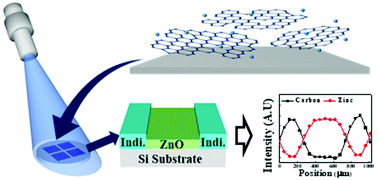Facile rearrangement of molecular layer deposited metalcone thin films by electron beam irradiation for area selective atomic layer deposition†
Abstract
Area selective atomic layer deposition (AS-ALD) is a promising future technology for the realization of a 5 nm scale Si complementary field effect transistor (FET) and its application in industry. AS-ALD is one of the “bottom-up” technologies, which is a key process that can reduce the cost of fabrication and decrease positional error as an alternative to the conventional “top down” technology. We researched an inhibitor for AS-ALD using molecular layer deposited (MLD) films annealed by electron beam irradiation (EBI). We studied the effect of EBI on an indicone film that was fabricated by using bis(trimethylsilyl)amidodiethyl indium (INCA-1), hydroquinone (HQ), an alucone film fabricated by using trimethylaluminum (TMA) and 4-mercaptophenol (4MP). The EBI effect on MLD films was evaluated by investigating the changes in thickness, composition and structure. In order to observe the selectivity of the annealed indicone film, atomic layer deposition of ZnO was performed on the annealed indicone/silicon line pattern, and it was found that the surface of annealed indicone can inhibit ALD of ZnO for 20 cycles as compared to a Si surface.



 Please wait while we load your content...
Please wait while we load your content...